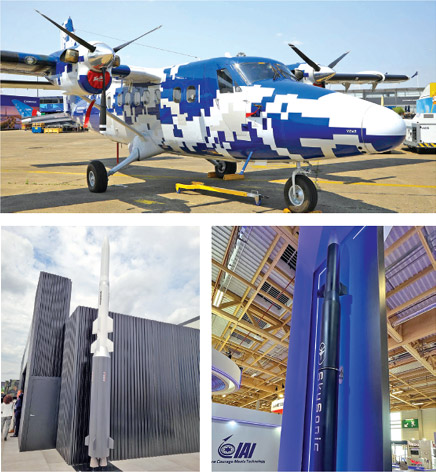Out of Covid’s Shadow
Prasun K. Sengupta
After a four-year hiatus because of Covid-19 pandemic restrictions, the 54th Paris Air Show held at the Le Bourget Airport from June 19 to 25 witnessed strong demands for both commercial airliners and new-generation air-defence systems. With air travellers returning after the pandemic and the strong demand for jetliners, airlines worldwide, especially Indian, are ordering new aircraft. Aircraft manufacturers, on the other hand, are struggling to keep up with the high demand, saying the supply chain will only stabilise in 2027 and beyond for general availability.

In the latter half of the first day at the expo, a record-setting contract was signed between Airbus and Indian airline IndiGo for 500 single-aisle airliners. It is the biggest single purchase agreement in the history of commercial aviation. Incredibly, these 500 A320neo family aircraft (exact models and engine choice are still to be decided) are all firm orders—a sign of the airline’s massive confidence in the Indian air travel market, which has already exceeded pre-Covid-19 levels. These bring the airline’s total Airbus backlog to over 1,330 aircraft, with the carrier all set to double in size by the end of the decade. The value of the contract is undisclosed according to Airbus, which has stopped publishing list-prices. The first deliveries will begin in 2030.
What is remarkable is that only two years ago, some had predicted that the pandemic would irrevocably change and halt the growth of air travel. The IndiGo order has proved that the pandemic is now well in the rear-view mirror. IndiGo presently operates more than 300 aircraft and it has previous orders for 480 aircraft, which are yet to be delivered. The Tata Group-owned Air India too firmed up its order for 250 Airbus aircraft and also selected an Airbus maintenance and digital package to power the airline’s transformation and growth strategy. The aircraft order includes 140 A320neo and 70 A321neo single-aisle aircraft as well as 34 A350-1000 and six A350-900 wide-body jetliners. Last February, the airline had signed a letter of intent to acquire these aircraft as well as Boeing-made airliners worth Rs 6.4 lakh crore.
On the second day of the expo, Air India inked a contract with Boeing for the delivery of 190 B.737 MAXs, 20 B.787 Dreamliners and 10 B.777Xs, with options for 50 B.737 MAXs and 20 B.787 Dreamliners—this being
Twin Otter Classic 300-G; RAFAEL’s SkySonic interceptor; MBDA’s Aquila interceptor
Boeing’s largest order in South Asia and highlights its 90-year partnership with Air India. Commenting on these contracts India’s civil aviation minister Jyotiraditya Scindia said: “India has set another landmark with this largest-ever recorded order by a carrier with any aircraft manufacturer in the world.” He expressed confidence that such investments would yield fruitful outcomes in terms of employment opportunities within India, adding that “every USD invested in civil aviation yields USD 3.1 in terms of new growth, as well as the employment multiplier. Every direct job in civil aviation results in 6.1 indire
Subscribe To Force
Fuel Fearless Journalism with Your Yearly Subscription
SUBSCRIBE NOW
We don’t tell you how to do your job…
But we put the environment in which you do your job in perspective, so that when you step out you do so with the complete picture.







